Plastic Paradise
You’ve probably seen them around your local gaming store. If you’ve been around long enough, you’ve probably heard of Warhammer 40,000. But if you’re like me, the entire hobby just seemed daunting. Learning to assemble models from tiny bits, plus having to paint them with such fine detail, not to mention learning a ruleset that, from an outside perspective, seems so detailed and complicated… all of it can seem overwhelming. Still, as someone heavily into most niches of the tabletop hobby, such as RPGs and board games, miniatures games felt like a pretty glaring blind spot for me.
Luckily, my friendly local gaming store (shout out to Atomic Empire in Durham, North Carolina) regularly hosts Learn to Play Day. Here, I was introduced to Marvel: Crisis Protocol by Atomic Mass Games. The branding alone is what caught my eye. I’m very familiar with Marvel’s properties from their prolific status in mainstream media and their omnipresence in the tabletop games space. This meant there was a shortcut for my brain to connect with the game instead of learning a new world of lore and mythology. The models for the game were bright and uniquely posed, letting each stand out in its own iconic way. While the idea of building and assembling these models seemed overwhelming, the gameplay was thrilling, and I took my first leap into the hobby by picking up the core set.

As a kid who loved Legos, I found the process of assembling these detailed plastic models to be engaging and relaxing. Watching your model start as these tiny bits before they come together into a complete character is quite rewarding. It is my favorite part of the hobby now, though I’d recommend picking up some cement glue and a sprue cutter to make your life easier. The painting seems similarly daunting, but the best way to learn is to get messy and make mistakes. The first models I painted would not win any awards, but I surprised myself with how passable they turned out. And, hey, if you mess up your model, guess what? You can always repaint it. These two aspects of the hobby that felt so foreign and scary at first are now my favorite parts. They are vital aspects of what sets miniature gaming apart from board games and tabletop RPGs.
Earth’s Mightiest Heroes
Marvel: Crisis Protocol is known as a “skirmish” style wargame. Compared to other wargames, a skirmish game plays out at a much smaller scale than traditional wargames. Rather than both players fielding legions of grunts or platoons of infantry, you’re fielding a much smaller number of models. This puts the game’s focus more on how to use individual characters effectively rather than large-scale battlefield control. For a person new to the hobby, this is a great place to start and is less daunting than diving head-first into a full-scale wargame.

Specifically, focusing on a handful of models works well for the Marvel universe, where the action should properly be centered around these iconic heroes. Assembling your roster in Marvel: Crisis Protocol is simple enough. Start by picking ten heroes to put in your roster. These can be any models you want to play, though it is highly suggested that you center around specific affiliations. There are roughly two dozen affiliations to play, each with its own leader (or multiple leaders) that influence the playstyle of the units on the table. The Core Set has ten characters, giving you enough to play a five-on-five Avengers vs. Cabal battle to learn the fundamentals.
Further character boxes expand your roster and possible affiliations significantly. Star-Lord leads the Guardians of the Galaxy and can reroll dice more than others. Storm leads the Uncanny X-Men, allowing them to get extra movement around the board with free mini-teleports. There are over 140 characters and plenty of varying leadership styles to ensure you’ll find something that fits your vibe. The game is well-balanced so that you won’t be at a severe disadvantage playing whatever appeals to you most from a flavor perspective. I’ve always been an X-Men fan, so I dove into Brotherhood of Mutants with my favorite characters, Magneto and Mystique.
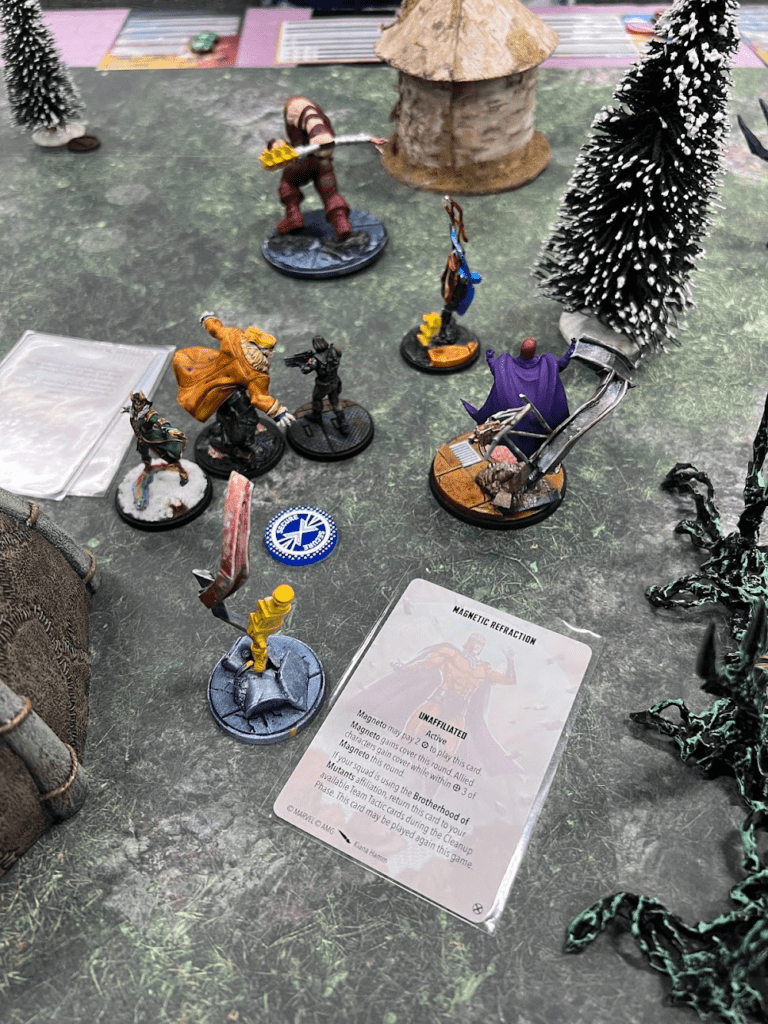
You can also bring along ten Team Tactics cards. These cards are (usually) onetime use effects that can be activated by specific characters or affiliations and have pretty powerful, game-changing impacts. When just starting out, picking which tactics cards to bring can be overwhelming, so I found it easier to play my first few games without them just to get the hang of things. With a couple of games under my belt, I could more easily evaluate my options for tactics cards and understand how they made an impact.
Finally, you’ll bring along six crisis cards. These crisis cards are at the core of each game of Marvel: Crisis Protocol. See, it’s even in the name! Players will randomly select two crisis cards from the pool brought by each player, and these two cards will determine the exact mechanisms by which players will score points. In some cases, perhaps the objectives are spread out all over the board, or maybe they’re clustered together in the middle. Sometimes, objectives will require a roll to check and see if they have an additional effect on you, such as pushing you around the map or dealing damage. The variance in the objectives keeps each game fresh.
In addition to setting the objectives, these crisis cards determine the “threat level” of each mission. The threat level determines how many units you can bring, as each character is assigned a value based on how powerful they are, anywhere from little two threat units up to mega nine threat characters. Most units reside in the three or four threat range, so from your 10-unit roster, you must assemble a team to match the threat level for the mission. Usually, this results in about four or five units actually hitting the table. And with that, you’re ready to do battle!
It’s Clobberin’ Time!
The game ends in one of three ways: at the end of round six, once someone reaches 16 points, or once one side has been completely wiped off the table. During gameplay, players will alternate turns. Once both players have activated all their units, the round will end, and you’ll score points. On your turn, you will pick one of your units to activate that has not yet activated this round, and they can take two actions. The common actions available to every character are move, attack, or shake. Move lets you advance your character on the board by using one of the available templates depending on their speed (short, medium, or long). Attack enables you to use one of your character’s printed attacks against a character within range (measured by handy range tools in varying sizes). Shake means removing one condition from your character, such as being poisoned, incinerated, or stunned. Some characters have superpowers that cost an action, but those are uncommon. Most characters can use superpowers freely during their activation.
The meat and potatoes of the game come from the attacks. There are three types of attacks: physical, mystical, and energy. Every character has printed defensive and attack values for each type. The attacker and defender create a pool of eight-sided dice based on the printed value on their character cards (plus or minus any conditions or superpowers), and you tally up the results. If the attacker has more hit symbols than the defender has block symbols, congratulations! You’re probably going to do some damage. Doing damage and being damaged are the primary ways characters gain power, allowing them to activate incredible superpowers or more epic attacks. Many attacks come with triggers if specific dice results show up, letting characters follow up with another attack, set the enemy character on fire, or dash toward the enemy. The possibilities are endless, but they usually are thematic and fit the comic book profile of the character.
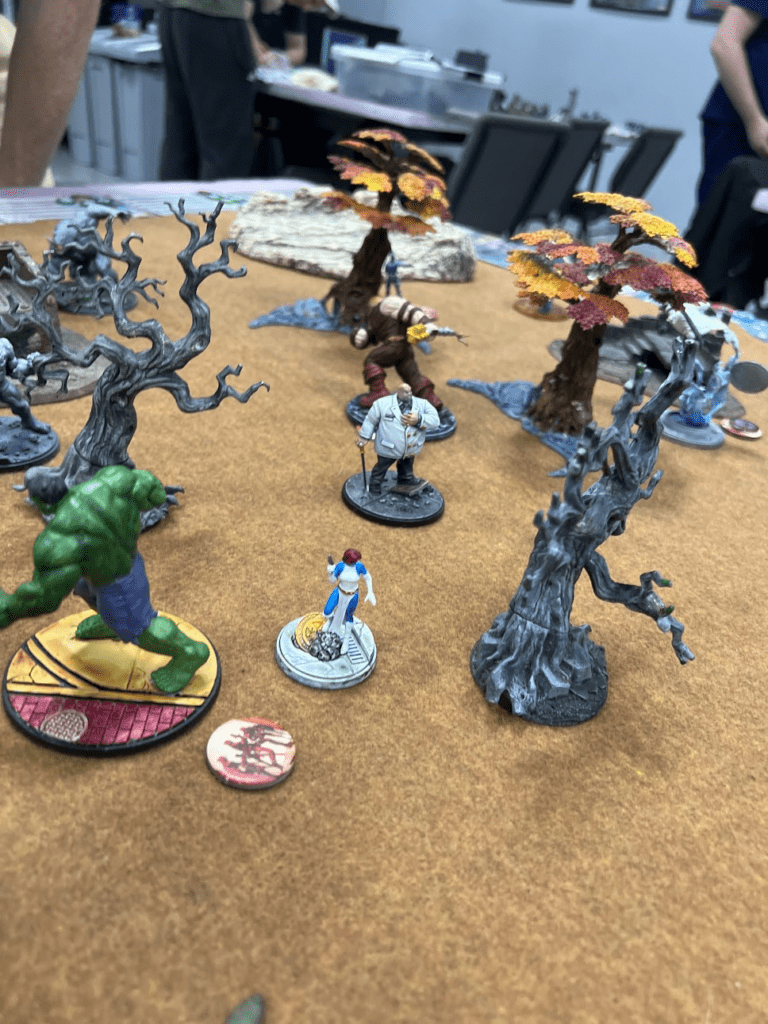
The terrain really sets this game apart and gives it that superhero feel. The gameplay takes place on a three-foot by three-foot map littered with various terrain pieces. The Core Set comes with a Daily Bugle newsstand, dumpsters, cars, and light poles. With this being a bunch of larger-than-life superhero characters clashing against one another, it only makes sense that they can interact with the terrain in cool ways. Magneto, the “Master of Magnetism,” is excellent at picking up that nearby garbage truck and throwing it into the enemy team. Hulk is so strong he can pick up enemy characters and toss them around on the map, perhaps even throwing them into buildings and destroying the buildings. Iron Man’s suit has built-in flight, so he can fly over terrain with ease and not have it impede his movement. Captain America has no such power, so he has to climb over terrain the old-fashioned way. The emphasis on terrain is relatively unique to Marvel: Crisis Protocol, and causing collisions by tossing people around while embodying your favorite superhero is enough to bring a smile to the face of even the most jaded gamers.
Competition, Community, and Critical Fails
Whether you’re joining the game to compete seriously or just looking to play casually, Atomic Mass Games has done a great job at building a larger community for the game. I’ve had some poor experiences in other semi-competitive tabletop communities (looking at you, Magic: the Gathering). Still, every single person I have met playing Marvel: Crisis Protocol has been wonderful. Everyone has been willing to help me learn the rules and talk through decisions while playing games. I have felt myself improving in my decision-making with my team of mutants since I started playing, and it is a beautiful feeling to sense yourself actively becoming more competent and knowledgeable in real time.
While not as massive as some trading card games, the competitive scene is large enough that you’ll be able to find a tournament within driving distance of most places regularly. My local game store hosts a tournament every other month, but in the past six months, there have been over two dozen tournaments within driving distance in North Carolina alone. Your state may vary, but there’s enough support for the system that if you’re seeking out competitive events, you can find them. I’d suggest starting with the official Facebook group or hopping onto Longshanks to look for upcoming events.
If the design of the models, the joy of the hobby, immersion in the gameplay, and warm welcome from the community are all reasons to play Marvel: Crisis Protocol, then what are the weaknesses? As someone who usually detests games that are overly reliant upon randomness, there’s no way to sugarcoat the fact that Marvel: Crisis Protocol is, at its core, a game about rolling dice. Sometimes, the dice will be hot, and sometimes they’ll be cold. Sometimes, your opponent will high roll and one-shot your very tanky Juggernaut, and there’s nothing you can do about it. Sometimes, you’ll need just one point of damage to kill their leader, and you’ll roll nothing but blanks. It just happens.
However, the dice attacks are only part of the game. Positioning your characters in the right spot, clever play around the objectives, and strategically using superpowers are all ways to improve your chances and not be as reliant on the dice. Plus, with a game like this, I’ve become convinced that randomness is a good thing. It means a new player with minimal experience, like myself, can come into a match with an experienced veteran and still have a shot at squeaking out a win. It can lead to some cinematic, thrilling moments where the crux of the game hangs in the balance of one dice roll, where you either let out a shout of relief or a groan of crushing defeat afterward. It’s beautiful and powerful when a game can produce such emotions and memorable moments.
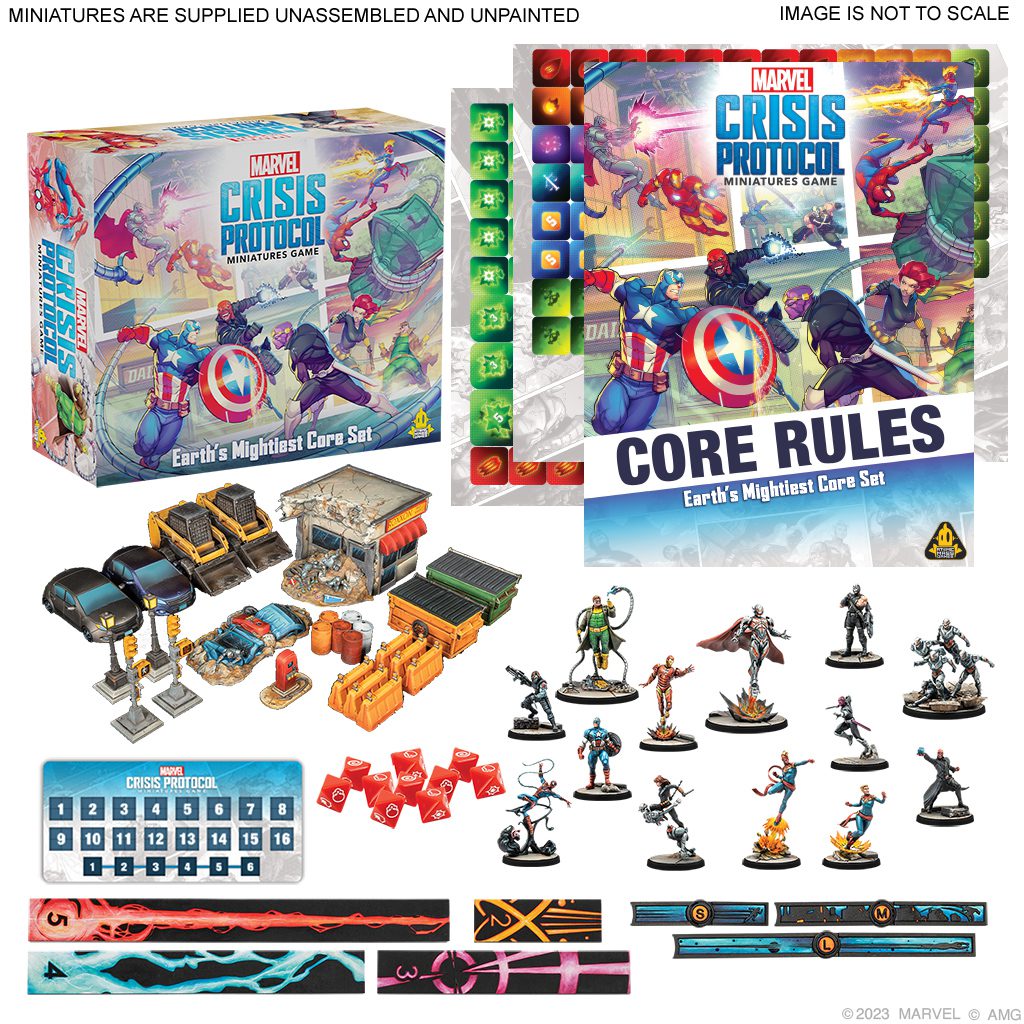
I’m all-in on Marvel: Crisis Protocol. The game is entering its fifth year this Fall, and Atomic Mass Games is commemorating the occasion by releasing an all-new core set. The “Earth’s Mightiest Heroes” core set will bring all new models updated to be competitive in the current landscape and is the perfect jumping-off point for newcomers to the game. If you feel hesitant or unsure, I promise it’s not nearly as scary as it looks! Find yourself a local store that supports Marvel: Crisis Protocol and ask for a demo. You may, like me, discover your next obsession.


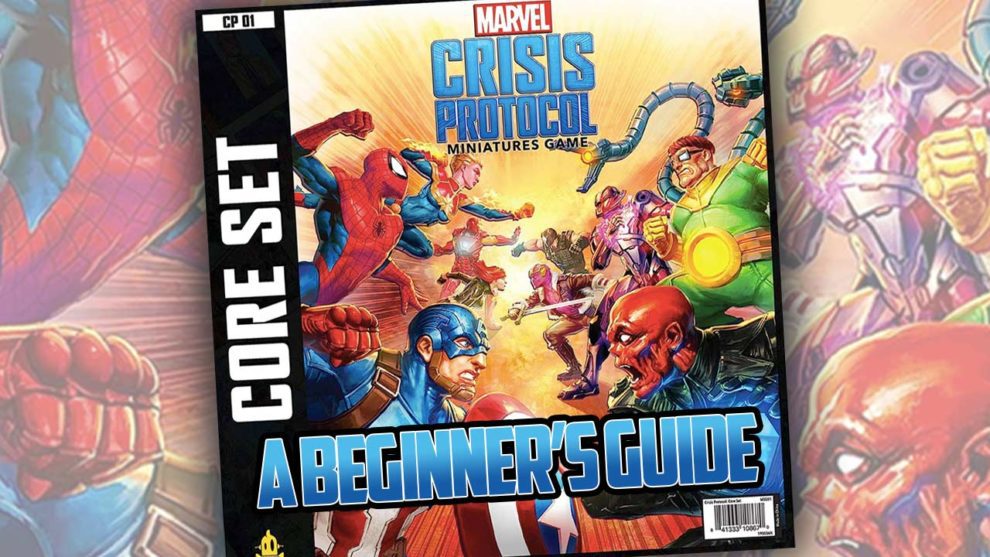

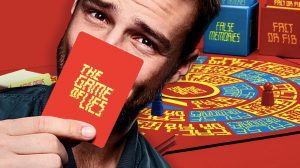


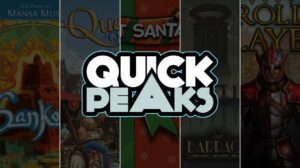




Add Comment